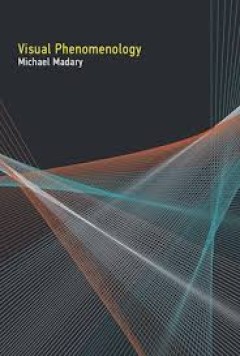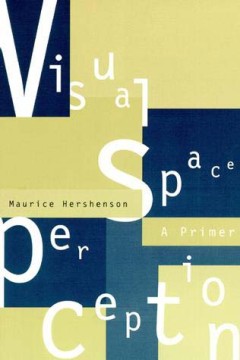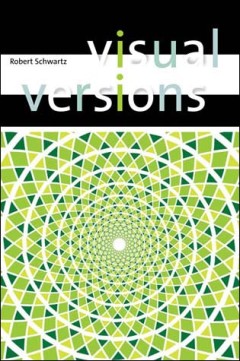Filter by

Visual phenomenology
"In this book, Michael Madary examines visual experience, drawing on both phenomenological and empirical methods of investigation. He finds that these two approaches--careful, philosophical description of experience and the science of vision--independently converge on the same result: Visual perception is an ongoing process of anticipation and fulfillment. Madary first makes the case for the de…
- Edition
- -
- ISBN/ISSN
- 9780262341783
- Collation
- 1 online resource (xii, 247 pages) :illustrations
- Series Title
- -
- Call Number
- -

Visual Space Perception: A Primer
A Bradford book."OCLC-licensed vendor bibliographic record.
- Edition
- -
- ISBN/ISSN
- 9780262275316
- Collation
- 1 online resource (xvi, 238 pages) :illustrations
- Series Title
- -
- Call Number
- -

Visual Versions
A Bradford book."These essays by Robert Schwartz on topics in the theory of vision are written from a pragmatic perspective. The issues and arguments will interest both philosophers and psychologists, covering new ground and bridging gaps between these disciplines. Schwartz begins historically, with discussions of problems raised and solutions offered in Bishop Berkeley's writings on vision, pr…
- Edition
- -
- ISBN/ISSN
- 9780262283304
- Collation
- 1 online resource (x, 265 pages) :illustrations
- Series Title
- -
- Call Number
- -

3D shape :its unique place in visual perception
A new account of how we perceive the 3D shapes of objects and how to design machines that can see shapes the way we do.OCLC-licensed vendor bibliographic record.
- Edition
- -
- ISBN/ISSN
- 9780262281652
- Collation
- 1 online resource (xiv, 278 pages) :illustrations
- Series Title
- -
- Call Number
- -

Things and places :how the mind connects with the world
"A Bradford book."Problems in linking representation and perceived things in the world are discussed in light of the role played by a preconceptual indexing mechanism that functions to identify, reidentify, and track objects.OCLC-licensed vendor bibliographic record.
- Edition
- -
- ISBN/ISSN
- 9780262282000
- Collation
- 1 online resource (xiv, 255 pages) :illustrations.
- Series Title
- -
- Call Number
- -

Laws of seeing
Translated from the German."This classic 1936 work in vision science, written by a leading figure in Germany's Gestalt movement in psychology and appearing in English for the first time, addresses topics that remain of major interest to vision researchers today. Wolfgang Metzger's main argument, drawn from Gestalt theory, is that the objects we perceive in visual experience are not the objects …
- Edition
- -
- ISBN/ISSN
- 9780262279710
- Collation
- 1 online resource (xxv, 203 pages) :illustrations
- Series Title
- -
- Call Number
- -

The psychology of art and the evolution of the conscious brain
How did the human brain evolve so that consciousness of art could develop? In The Psychology of Art and the Evolution of the Conscious Brain, Robert Solso describes how a consciousness that evolved for other purposes perceives and creates art. Drawing on his earlier book Cognition and the Visual Arts and ten years of new findings in cognitive research (as well as new ideas in anthropology and a…
- Edition
- -
- ISBN/ISSN
- 9780262284059
- Collation
- 1 online resource (xv, 278 pages) :illustrations.
- Series Title
- -
- Call Number
- -

Seeing and visualizing :it's not what you think
"In Seeing and Visualizing Zenon Pylyshyn argues that seeing is different from thinking and that to see is not, as it may seem intuitively, to create an inner replica of the world. Pylyshyn examines how we see and how we visualize and why the scientific account does not align with the way these processes seem to us "from the inside." In doing so, he addresses issues in vision science, cognitive…
- Edition
- -
- ISBN/ISSN
- 9780262316316
- Collation
- 1 online resource (xviii, 563 pages) :illustrations.
- Series Title
- -
- Call Number
- -

Representation and Recognition in Vision.
AnnotationOCLC-licensed vendor bibliographic record.
- Edition
- -
- ISBN/ISSN
- 9780262272155
- Collation
- 1 online resource (402 pages)
- Series Title
- -
- Call Number
- -
 Computer Science, Information & General Works
Computer Science, Information & General Works  Philosophy & Psychology
Philosophy & Psychology  Religion
Religion  Social Sciences
Social Sciences  Language
Language  Pure Science
Pure Science  Applied Sciences
Applied Sciences  Art & Recreation
Art & Recreation  Literature
Literature  History & Geography
History & Geography